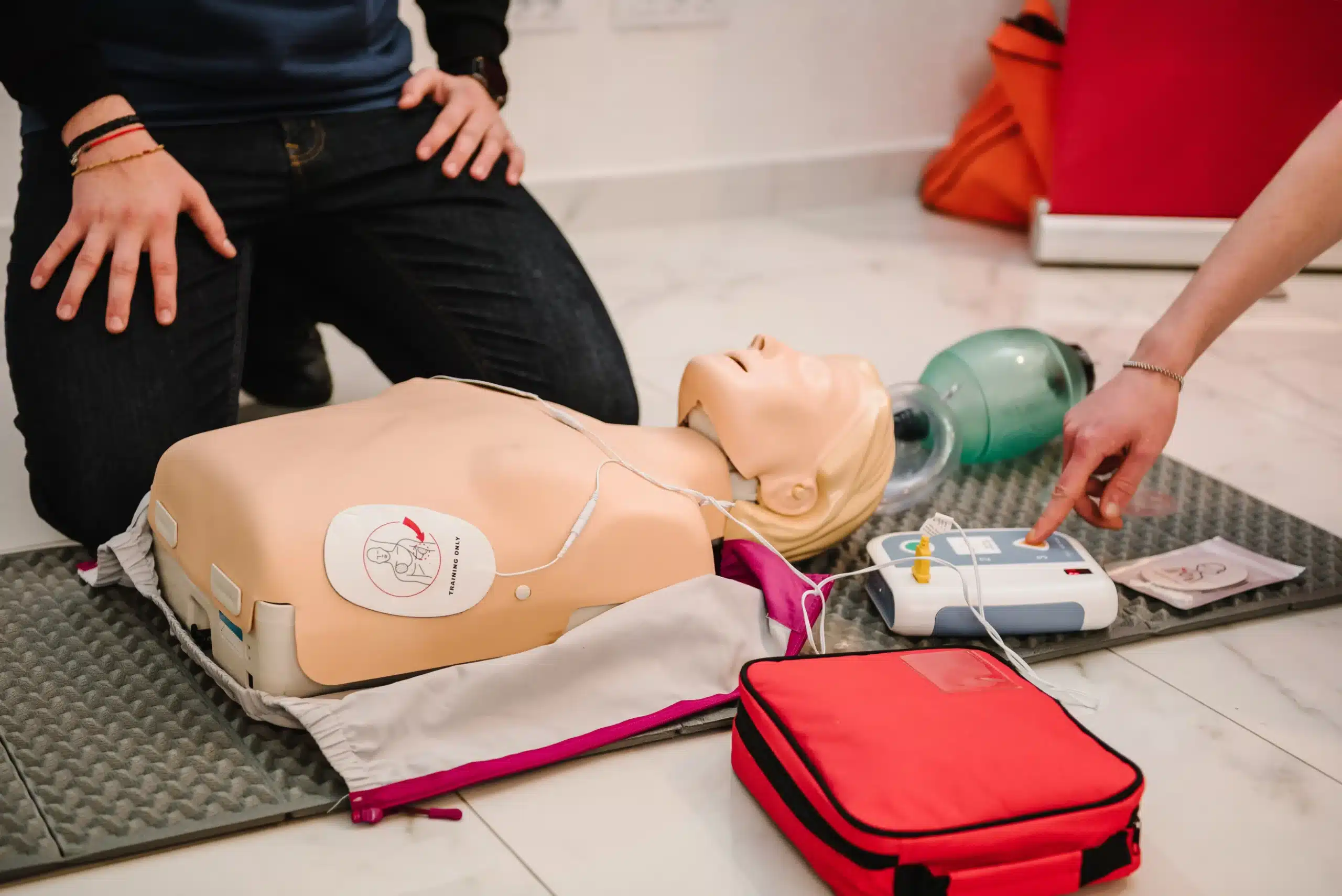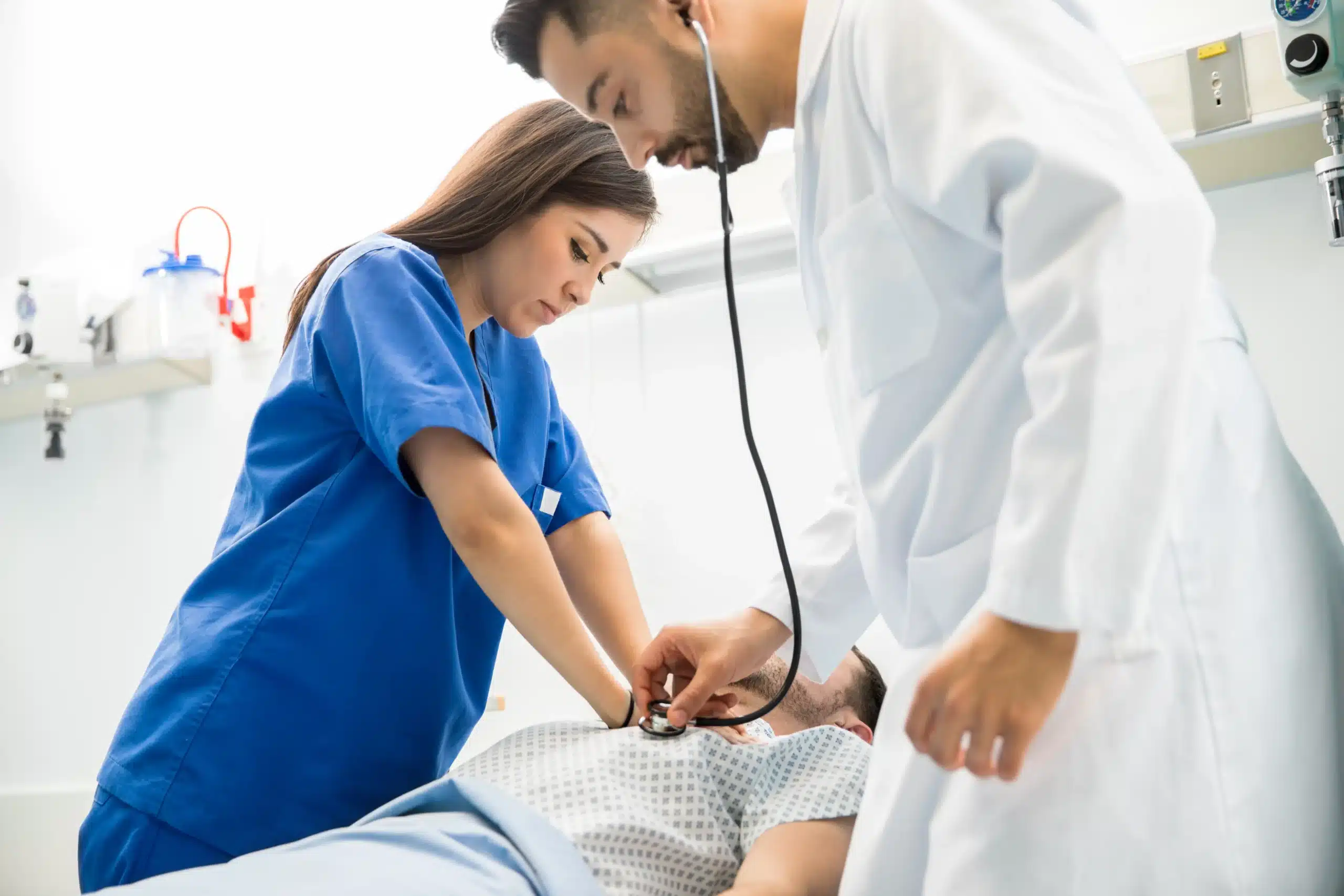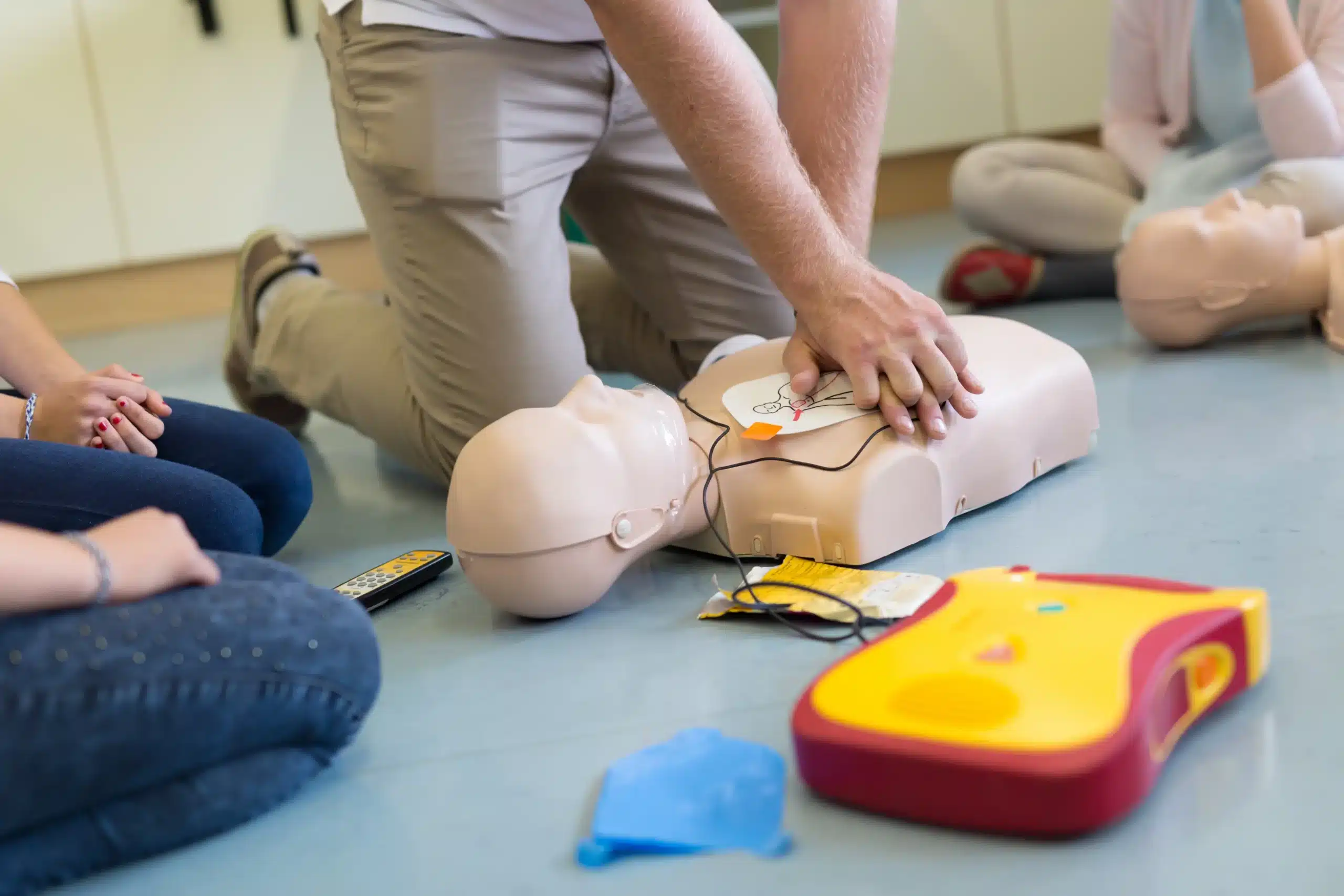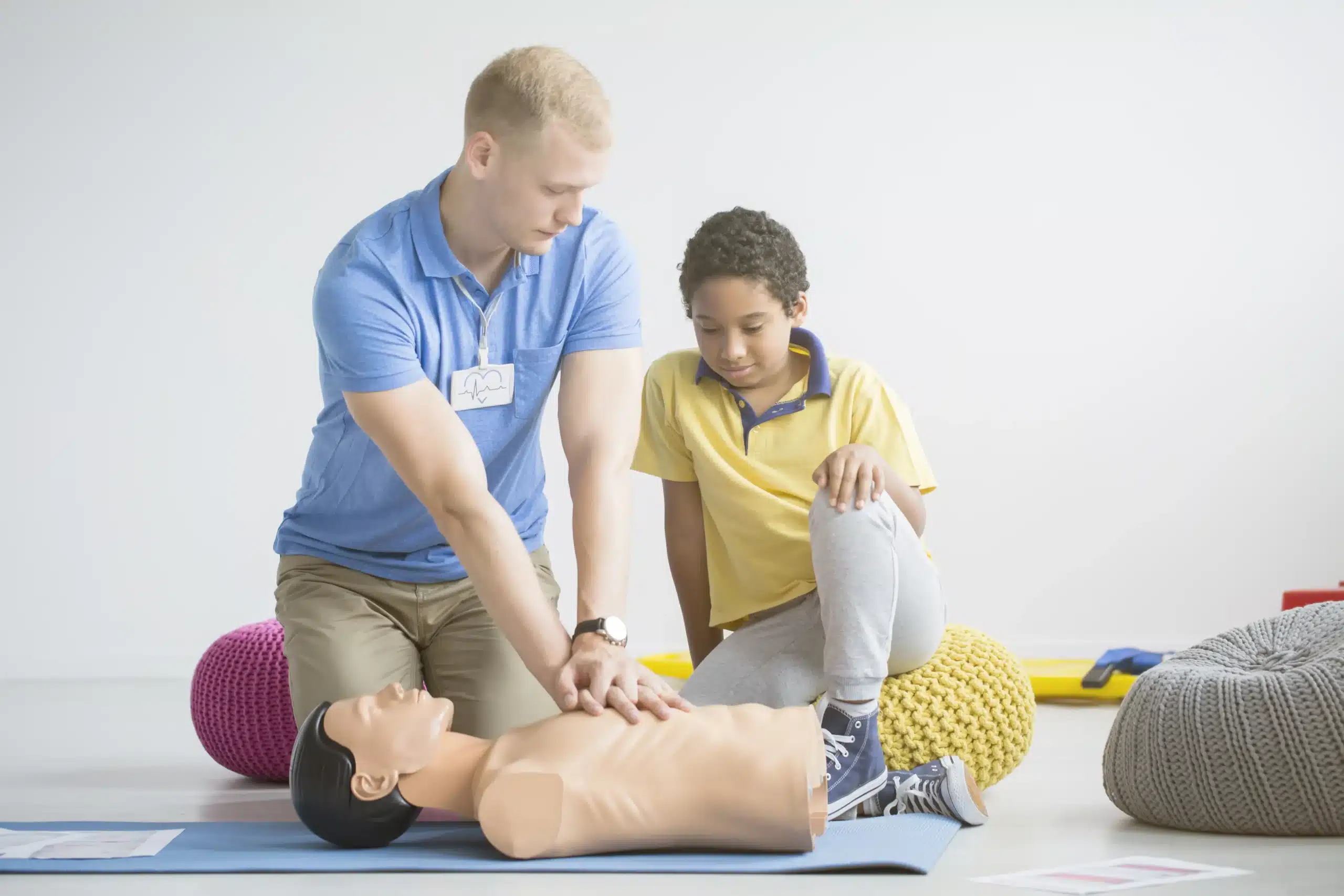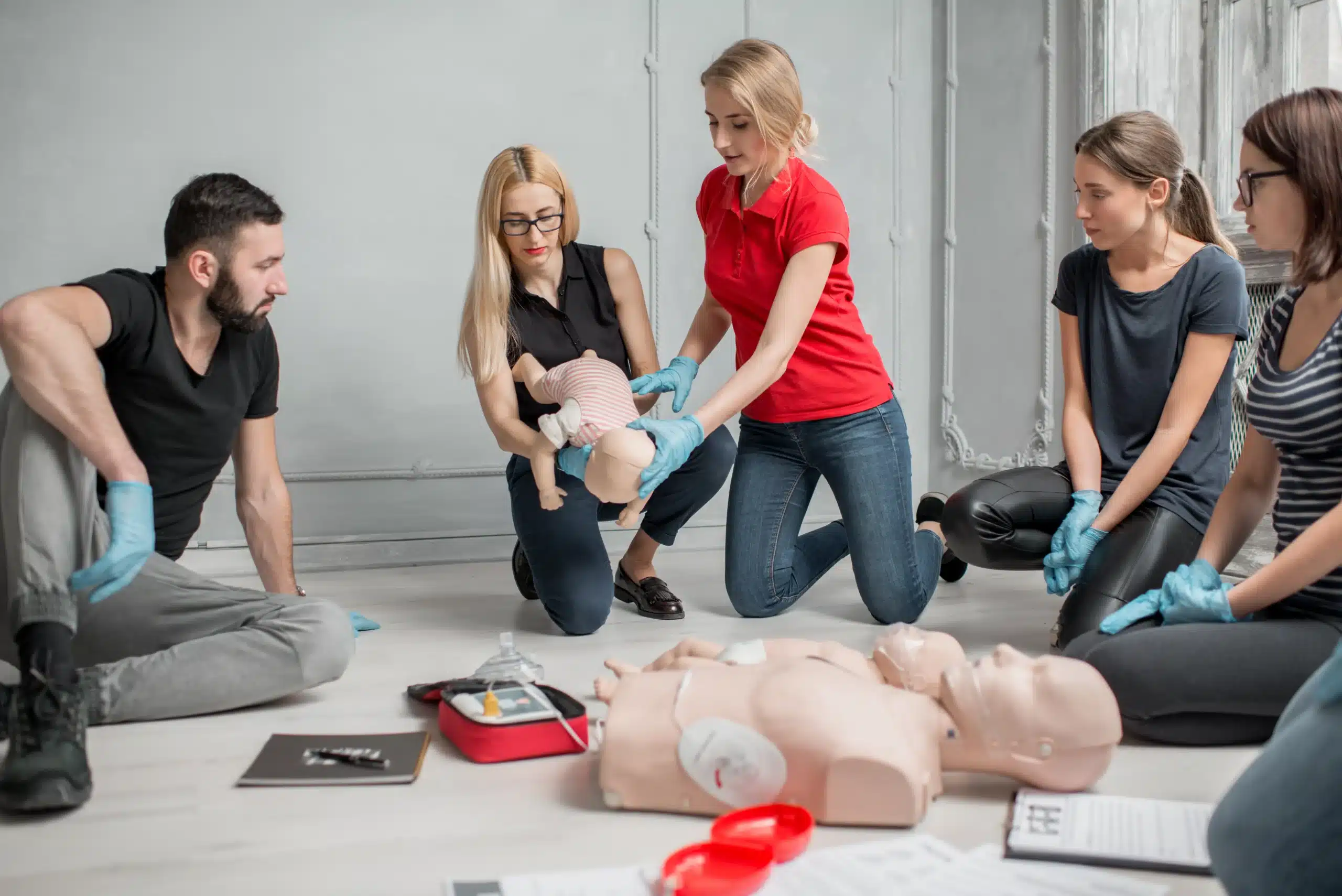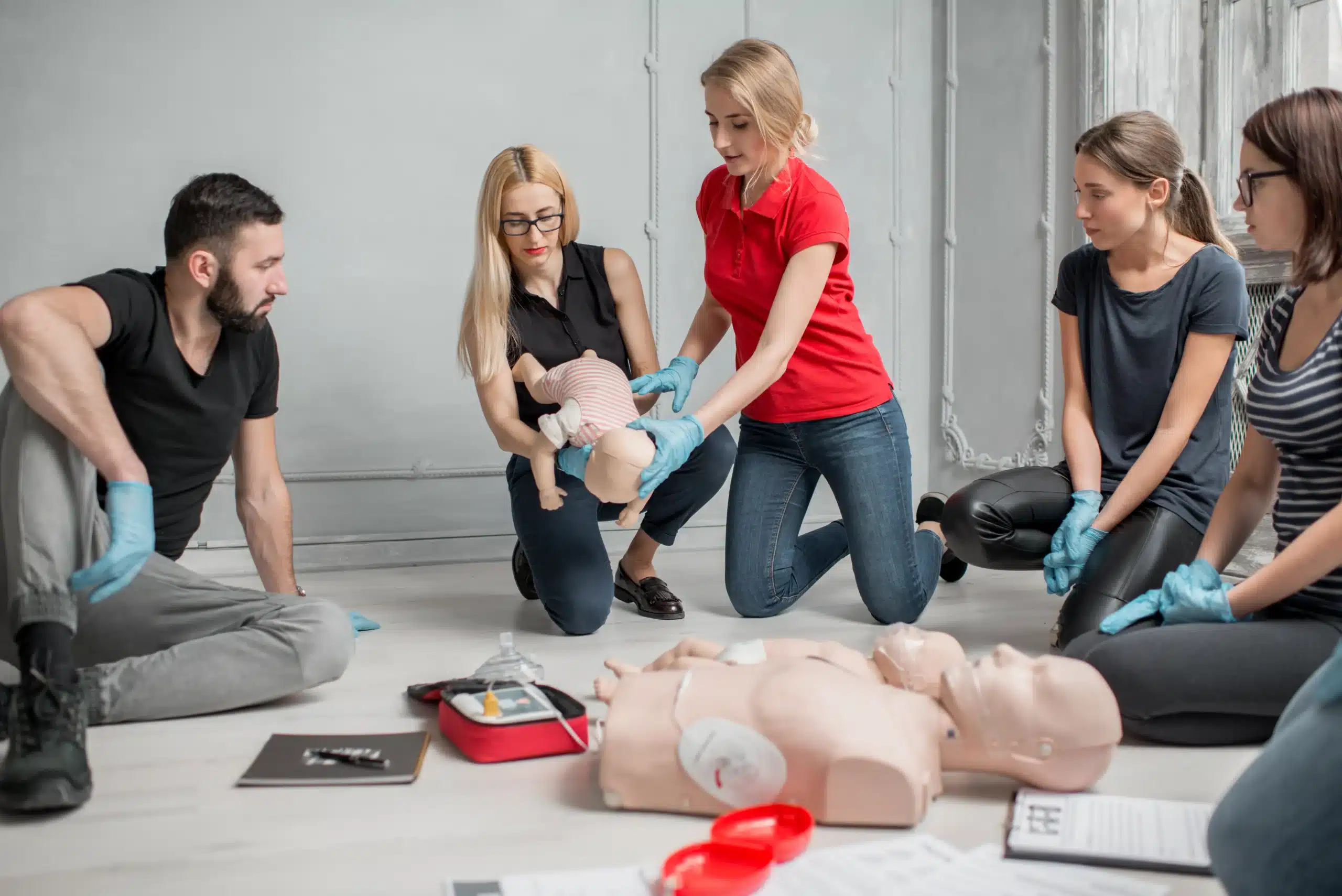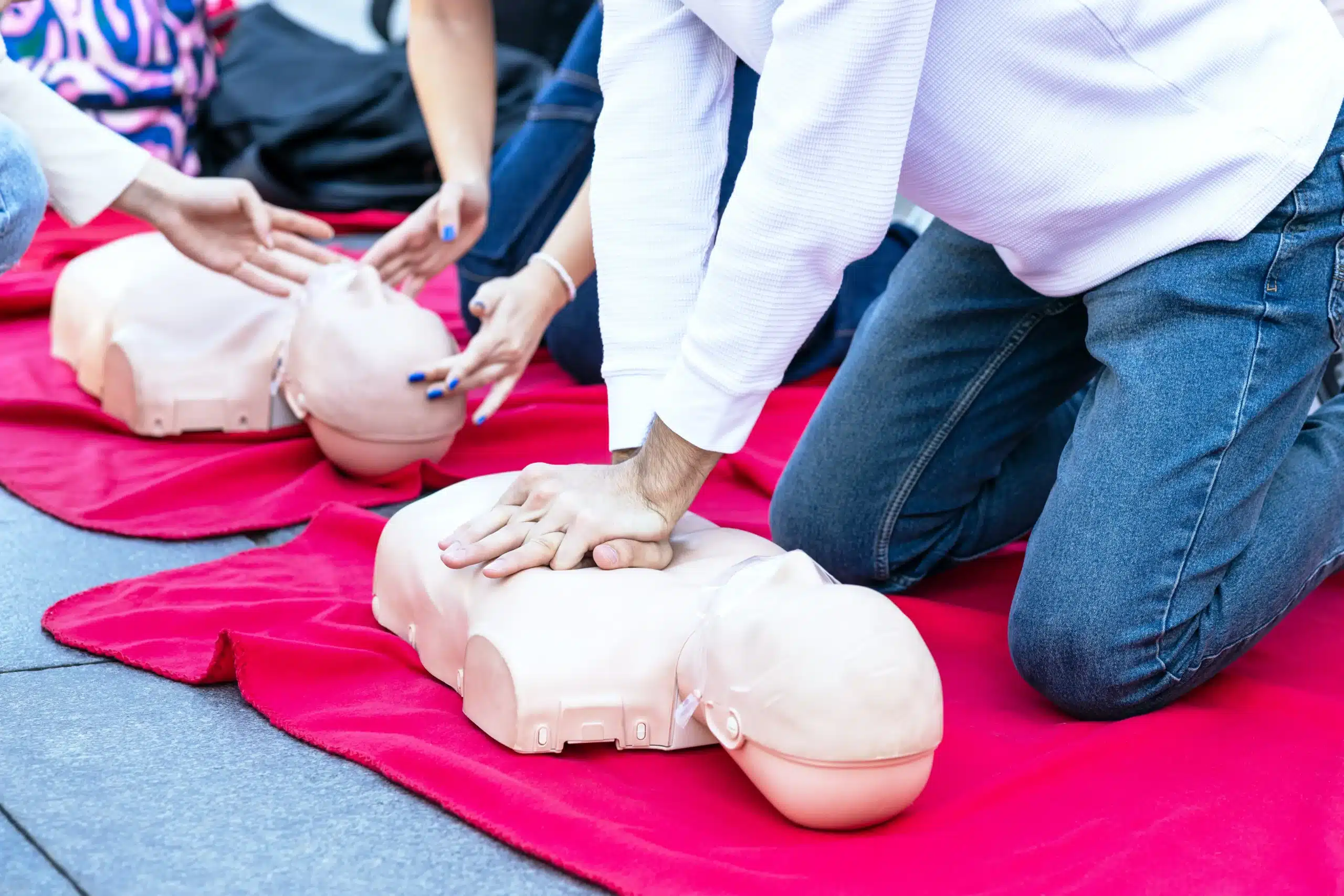First-aid training in Berkeley is more accessible than you might think. This guide breaks down the process of getting certified, from choosing the right course to understanding the costs and benefits. Whether you’re motivated by career advancement, community involvement, or personal preparedness, we’ll explore the various first-aid training options available in Berkeley. From basic first aid and CPR to specialized certifications like BLS and PALS, this guide will help you find the perfect fit for your needs and goals. We’ll also discuss the importance of recertification and how to stay up-to-date with the latest first-aid practices.
Key Takeaways
- First aid skills empower you in emergencies: Knowing how to respond to both minor and major medical situations can make a real difference before professional help arrives. Consider your individual needs when selecting a course, such as basic first aid, CPR/AED, or specialized certifications like BLS, ACLS, and PALS.
- Find a course that fits your lifestyle: From in-person, hands-on learning to flexible online and hybrid options, there’s a training format to suit everyone’s schedule. Explore group discounts if you’re training with colleagues or a community organization.
- Choose a recognized certification and stay current: Ensure your training comes from a reputable organization like the American Heart Association and provides a valid certification card. Mark your calendar for recertification to maintain your valuable skills and knowledge.
What is First Aid Training in Berkeley?
First aid training gives you the skills to handle medical emergencies. It covers a wide range of situations, from treating minor injuries like cuts and burns to responding to more serious incidents like heart attacks and strokes. These courses teach practical skills, like how to control bleeding, bandage wounds, and perform CPR. It’s about knowing what to do—and what not to do—in a crisis. This knowledge can make a real difference, potentially saving lives in your community. In Berkeley, many first aid courses are combined with CPR training, giving you a well-rounded skill set to handle various emergencies involving adults, children, and infants. Several organizations offer these combined first-aid certification courses in Berkeley, including the American Heart Association and local providers like Safety Training Seminars. This ensures you receive high-quality, recognized training that meets current standards. Many healthcare professionals in Berkeley are also turning to the Resuscitation Quality Improvement (RQI) program, a modern approach with hands-on practice and immediate feedback. Whether you’re a healthcare provider, a parent, or simply someone who wants to be prepared, first aid training empowers you to act confidently and effectively in an emergency.
First Aid Courses Available
Knowing which first aid course best suits your needs can feel overwhelming with so many options. This section breaks down the various certifications available in Berkeley, including CPR/AED, BLS, ACLS, PALS, and standard First Aid.
CPR and AED Certification
CPR and AED certification are fundamental for anyone looking to respond effectively to cardiac emergencies. These CPR courses teach you how to perform chest compressions and rescue breaths—essential skills for assisting someone experiencing cardiac arrest. The AED portion of the training covers the safe and effective use of an automated external defibrillator, a device that can help restore a normal heart rhythm. Safety Training Seminars offers American Heart Association-certified CPR courses in Berkeley, equipping you with the confidence to act quickly and potentially save a life.
Basic Life Support (BLS)
Basic Life Support (BLS) builds upon the foundation of CPR. BLS certification enhances your CPR skills and introduces techniques tailored for adults, children, and infants. It also includes training on using an Automated External Defibrillator (AED). This course is ideal for healthcare providers and anyone who wants a more comprehensive understanding of life-saving techniques. Safety Training Seminars offers daily BLS Provider courses through the American Heart Association.
Advanced Cardiovascular Life Support (ACLS)
For medical and healthcare professionals, Advanced Cardiovascular Life Support (ACLS) training is crucial. ACLS courses, offered daily by the American Heart Association through Safety Training Seminars, focus on the advanced management of cardiac arrest and other cardiovascular emergencies. This certification delves into the complex algorithms and interventions necessary for providing high-quality care in critical situations.
Pediatric Advanced Life Support (PALS)
Medical professionals who work with children should consider obtaining Pediatric Advanced Life Support (PALS) certification. These specialized PALS courses, also offered by the American Heart Association, equip providers with the knowledge and skills to manage life-threatening emergencies in pediatric patients. The training covers critical interventions specific to the unique needs of infants and children.
First Aid Certification
Beyond CPR and specialized life support, first aid certification provides a broader skill set for handling various medical emergencies. From treating minor injuries like cuts and burns to managing more serious situations like allergic reactions and fractures, first aid training empowers you to provide immediate care until professional medical help arrives. Safety Training Seminars offers comprehensive first aid courses in Berkeley, in addition to their CPR, BLS, ACLS, and PALS certifications.
Course Costs & Training Formats
Knowing the costs and time commitment associated with first aid training helps you plan and budget effectively. Let’s break down the typical expenses and different learning formats available in Berkeley.
Individual Course Pricing
First aid training costs vary based on the provider, the level of certification, and the course content. For example, a combined CPR and first aid course from Berkeley CPR Classes costs $140, covering CPR training for all ages, AED instruction, and how to handle emergencies like bleeding and burns. Expect similar pricing for comparable courses from other providers. Always confirm precisely what the quoted price includes before registering. Some providers may offer additional modules or certifications at an extra cost.
Group Rates and Discounts
Many training centers offer discounts for group bookings, making it a cost-effective option for workplaces, community groups, or families learning together. An informational CPR training session costs less than one leading to certification. For instance, a two-hour course on CPR and AED use averages around $35 per person. If an employer books the same class for a group, they might secure a discounted rate, potentially saving each participant money. It’s always worth inquiring about group discounts when registering multiple people.
In-Person Classes
In-person classes provide hands-on learning and direct interaction with instructors. A basic CPR certification class usually takes two to four hours. Combined CPR and first aid training sessions typically run longer, from four to eight hours, due to the broader range of skills covered. The benefit of in-person training is the immediate feedback and opportunity to practice skills in a controlled environment.
Online and Hybrid Learning Options
For those with busy schedules, online or hybrid courses offer flexibility. Online CPR courses, excluding the skills practice component, usually take about four hours to complete. However, keep in mind that an in-person skills assessment may be required to obtain some certifications, especially those needed for employment. Hybrid courses combine online learning with in-person skills sessions, offering a blend of convenience and practical training. This format allows you to learn the theoretical material at your own pace and then demonstrate your skills in a hands-on setting.
Benefits of First Aid Certification
Getting your first aid certification offers more than just a credential—it empowers you to make a real difference. Whether you’re a parent, teacher, or just someone who wants to be prepared, the benefits extend to your personal life, career, and community. Let’s explore why getting certified in first aid is a valuable investment.
Empower Yourself in Emergencies
First aid training equips you with the skills and confidence to respond effectively during emergencies. Imagine you’re at a park and see someone suddenly collapse. Instead of feeling helpless, you’ll have the knowledge to assess the situation, provide immediate assistance, and potentially save a life. These skills are invaluable in any environment, from your home to the workplace. As Bay Area CPR highlights, first aid and CPR training are crucial for community safety, enabling individuals to respond effectively during crises. Knowing how to administer CPR, control bleeding, or stabilize an injury can significantly impact outcomes before professional help arrives.
Advance Your Career
A first aid certification can be a significant asset to your resume. Many professions, from healthcare and childcare to education and construction, value employees with these skills. It shows your commitment to safety and your ability to handle critical situations. A first aid certification can give you a competitive edge, even if it’s not a direct requirement for your current role. For those seeking career advancement, obtaining certifications like BLS for Healthcare Providers can be particularly beneficial.
Make a Community Impact
Becoming first aid certified contributes to a safer and more resilient community. When more people are equipped to handle emergencies, everyone benefits. Your skills can make a difference in various situations, from assisting a neighbor experiencing a medical issue to volunteering at community events. CPR and first aid classes empower individuals to take an active role in community safety and preparedness. By being prepared, you create a safer environment for everyone around you.
Choose the Right First Aid Course
Deciding on the right first aid course can feel overwhelming with so many options. This guide breaks down key factors to help you choose the best fit for your specific needs.
Assess Your Needs and Goals
First, think about why you’re pursuing first aid training. Are you required to have certification for your job, or are you simply looking to feel more prepared for everyday emergencies? CPR and first aid classes are a vital part of community safety, and in Berkeley, courses cater to a wide range of individuals. If you work with children, for instance, you’ll need a different certification than someone who needs basic first aid knowledge for personal use. Understanding your goals will guide you toward the right course. For those interested in CPR classes, you can explore options available in nearby San Pablo, which also serves Richmond, Berkeley, and Oakland, at San Pablo CPR Classes.
Compare Course Content and Duration
Once you have a general idea of your needs, start comparing course content. Some courses focus solely on CPR training, while others combine CPR and first aid training. A combined CPR and first-aid course from Berkeley CPR Classes covers a broad range of skills, including CPR for all ages, AED instruction, and how to handle emergencies like bleeding and burns. Course duration also varies. A basic CPR certification class typically takes two to four hours, while combined CPR and first aid training sessions can range from four to eight hours. Consider your schedule and how much time you can realistically commit to training. You can find a variety of CPR and first aid courses, including convenient options for childcare providers meeting specific EMSA requirements, at Safety Training Seminars.
Evaluate Instructor Qualifications
The quality of your training depends heavily on the instructor’s expertise. Look for courses taught by certified instructors from reputable organizations like the American Heart Association (AHA). Safety Training Seminars is a woman-owned AHA Training Center known for its high-quality instruction. Check instructor bios, read reviews, and don’t hesitate to contact the training center with any questions about instructor credentials. For those seeking AHA-certified courses with a low price guarantee, you can check out the options available at Bay Area CPR.
Consider Certification Recognition
Finally, make sure the certification you receive is widely recognized and accepted. Many employers and organizations require certification from specific organizations like the AHA. Verify that the course you choose provides an official certification card, valid for two years, which is often a requirement for professional settings. You can find more information about available courses and certification details by contacting Safety Training Seminars directly. They offer a range of AHA-certified courses, including BLS for healthcare professionals, ensuring your certification meets professional standards. You can explore their BLS course offerings on their website.
First Aid Training Providers in Berkeley
Finding the right first aid training provider is an important step. Here are some options available in Berkeley:
Safety Training Seminars
Safety Training Seminars offers AHA-certified courses in CPR, BLS, ACLS, PALS, and First Aid. They focus on providing convenient, high-quality training throughout the week in Berkeley and surrounding areas. As a woman-owned business, they emphasize customer service and offer classes daily to accommodate busy schedules.
American Red Cross
The American Red Cross provides first aid, CPR, and AED training options nationwide. They offer various learning formats, including online, in-person, and blended learning. Check their website for specific courses, schedules, and availability in Berkeley.
Berkeley Fire Department
The Berkeley Fire Department may offer first aid training for the community. Contact them directly or check their website for current information on available courses. While many fire departments offer CPR training, first aid courses may be less frequent.
UC Berkeley Recreation
UC Berkeley Recreation (RecWell) offers various health and safety courses, including CPR/AED, first aid, and wilderness medicine. These programs cater to different skill levels, from beginners to those needing recertification. Check their website for details and pricing.
Berkeley CPR Classes
Berkeley CPR Classes provides AHA-certified courses in CPR, BLS, ACLS, PALS, and First Aid. With daily classes at multiple locations in Northern California, they offer a convenient option for those in and around Berkeley.
Register and Maintain Your Certification
Getting certified and staying current with your first aid and CPR skills is straightforward. Here’s a step-by-step guide:
Enroll Step-by-Step
Signing up for a CPR class is easy. Safety Training Seminars offers American Heart Association CPR, BLS, ACLS, and PALS courses in Berkeley, CA. Browse the course calendar and select the date, time, and location that works for you. You can register and pay securely online in minutes. Questions about which course is right for you? Our customer service team is available daily to help.
Gather Required Materials
One of the best parts about training with Safety Training Seminars? We handle the materials. Our instructors bring all the necessary supplies and equipment to your chosen location, whether it’s your workplace, a community center, or one of our training facilities. Just show up ready to learn.
Meet Recertification Requirements
Your certification is valid for two years. Mark your calendar so you know when it’s time to recertify. Safety Training Seminars makes renewing your skills and knowledge easy with refresher courses designed to meet the American Heart Association’s standards. You’ll receive an updated certification card after completing the recertification course.
Explore Continuing Education
Beyond your initial certification and recertification, consider exploring continuing education. Staying up-to-date on the latest first aid practices and techniques can increase your confidence and preparedness. Check our website or blog for information on advanced courses, specialized training, and other resources. For example, consider adding EMS Child Care Health and Safety training to your certifications. This course covers essential preventive health and safety practices for childcare providers.
Related Articles
- First-Aid Training in Oakland: A Complete Guide – San Pablo CPR Classes
- Online CPR Classes in Berkeley: Your Complete Guide – San Pablo CPR Classes
- PALS Certification in Berkeley: Your Comprehensive Guide – San Pablo CPR Classes
- Advanced Cardiac Life Support (ACLS) in Berkeley – San Pablo CPR Classes
- BLS Certification in Berkeley: Your Complete Guide – San Pablo CPR Classes
Frequently Asked Questions
What’s the difference between CPR and First Aid? CPR focuses specifically on life-saving techniques for cardiac arrest and breathing emergencies. First aid covers a broader range of medical situations, from minor injuries like cuts and burns to more serious conditions like choking and allergic reactions. Often, CPR training is included as part of a comprehensive first aid course.
How long does it take to get certified? The time commitment varies depending on the course type. A basic CPR certification class usually takes a few hours, while a combined CPR and first aid course might take a full day. Online or hybrid learning options can offer more flexibility, but often require an in-person skills assessment.
How much does first aid training cost? Costs depend on the level of certification, the course provider, and whether you’re taking a combined CPR/first aid course. Expect to pay around $100 or more for a comprehensive course. Many providers offer group discounts, so it’s worth inquiring about those if you’re registering with friends, family, or colleagues.
How do I choose the right course for me? Consider your specific needs and goals. Are you required to have certification for your job? Do you work with children or adults? Do you need basic first aid knowledge for personal use or more advanced training for a healthcare setting? Once you’ve identified your needs, compare course content, duration, and instructor qualifications to find the best fit.
How often do I need to recertify? Most first aid and CPR certifications are valid for two years. Check with your certifying organization or training provider for specific recertification requirements and available refresher courses. Staying current with your skills ensures you’re always prepared to respond effectively in an emergency.
